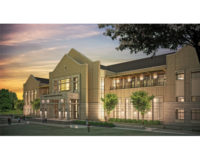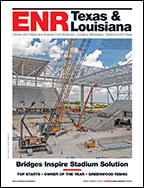Texas A&M University is planning a new Veterinary Medicine & Biomedical Sciences Education Complex on its main campus in College Station. Skanska has joined the team as general contractor to build the $93 million facility.

This 330,000-sq-ft building will house state-of-the-art classrooms, teaching and laboratory space and a café with indoor and outdoor dining facilities. Combined with the expansion of the small animal hospital, the new facilities will provide opportunities for innovations in teaching and will nurture collaboration and creativity for more than 500 students.
Ground was broken in June 2014, with anticipated completion in April 2016. The grand opening is expected to be held in conjunction with the 100 year anniversary of the Texas A&M University’s College of Veterinary Medicine & Biomedical Sciences.
“Over the years, Texas A&M has put its trust in Skanska with several significant facility expansions, including the Veterinary Medicine and Biomedical Sciences Education Complex,” says Ronnie Howe, senior vice president at Skanska. “In return, it has not only allowed us the opportunity to work for a great client but also helped connect with the university’s construction science program and, as a result, hire many excellent interns and full time employees that are helping to grow our business.”
While the project is still largely in the planning phase, some of the goals the team has so far include:
- removing some existing live oak trees and using them to make furniture for the building;
- keeping campus facilities in operation during construction;
- installing specialized privacy fencing in case a large animal, for example a horse, was ever to become loose;
- installing privacy fence with screen to protect the animals that are going through traumatic brain injury research; and
- working to maintain pedestrian pathways as well as live animal pens and roadways for large animal transport; the transport is critical to the vet school.




Post a comment to this article
Report Abusive Comment